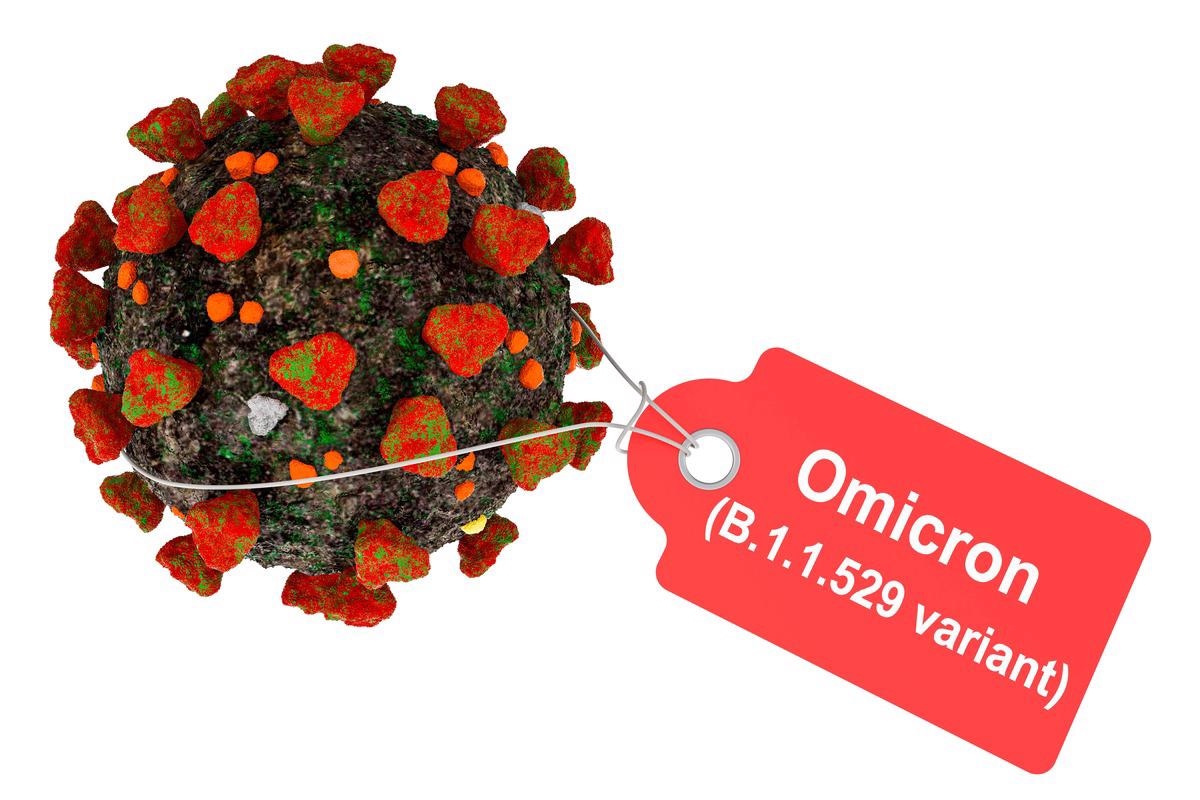Protection against SARS-CoV-2 Omicron variant by hetero-bivalent nanobodies
A recent study posted to the bioRxiv* pre-print server investigated the broad-spectrum protection provided by hetero-bivalent nanobodies against severe acute respiratory syndrome coronavirus 2 (SARS-CoV-2) variants of concern (VOCs), such as Omicron.

Coronavirus disease 2019 (COVID-19) vaccines have played an indispensable role in curbing the devastation caused by the pandemic. However, the rapid emergence of SARS-CoV-2 VOCs has weakened the effectiveness of these vaccines. This has called for the urgent development of therapeutic and prophylactic drugs against SARS-CoV-2 VOCs.
About the study
The present study determined the structural aspects of two hetero-bivalent receptor-binding domain (RBD) nanobodies (Nbs), namely aRBD-2-5 and aRBD-2-7, to assess their binding and neutralizing abilities against major SARS-CoV-2 VOCs.
SARS-CoV-2 RBDs of the wildtype (WT) strain and the Alpha, Beta, Delta, and Omicron VOCs were transfected as recombinant vectors into human embryonal kidney (HEK)- 293f cells. Surface plasmon resonance (SPR) was then performed and affinities were measured using different concentrations of RBD followed by an enzyme-linked immunosorbent assay (ELISA).
The team also employed a micro-neutralization assay and a plaque reduction neutralization (PRNT) assay to measure the neutralizing activity of antibody (Fc) receptors and Nb fusions. The plaques were then counted and 50% inhibitory concentration (IC50) causing neutralization was evaluated.
Female human angiotensin I-converting enzyme 2 (hACE2) transgenic mice were inoculated with one aRBD-2-5-Fc dose 24 hours prior to SARS-CoV-2 WT infection while female A/J mice were inoculated with one aRBD-2-5-Fc dose 24 hours before mouse-adapted SARS-CoV-2 infection. Non-infected cells and infected cells without antibodies were used as controls.
Prophylactic evaluation of the aRBD-2-5-Fc was performed by administering one dose of aRBD-2-5-Fc or phosphate-buffered saline (PBS) in five to six-week-old female Syrian hamsters. These hamsters were infected with SARS-CoV-2 Omicron VOC post-24 hours. Therapeutic evaluation of the aRBD-2-5-Fc was conducted by the injection of SARS-CoV-2 Omicron VOC in the hamsters, followed by one dose of aRBD-2-5-Fc or PBS. Analysis of titers and viral RNA copies was then performed on hamster trachea and lungs post-euthanization.
Results
The study results showed that the epitope of aRBD-2 was different when observed on RBDs other than that of aRBD-5 or aRBD-7 while the epitopes of aRBD-5 and aRBD-7 partially overlapped. The aRBD2 Nb binds on the RBD using its CDR2 (cerebellar degeneration-related protein 2) and CDR3. Also, aRBD-2 overlapped with the ACE2 binding site, indicating the ACE2-blocking ability of aRBD-2 while aRBD-7 had a small overlap with the ACE2 binding site. Notably, aRBD-5 was also positioned such that it could efficiently block RBD-ACE2 interaction.
Superposing the crystal complex structures with the spike protein demonstrated that while all the three Nbs could bind to the RBD in the ‘up’ conformation, aRBD-5 and aRBD-7 could also bind with the RBD’s ‘down’ conformation. Exploring the effect of the RBD mutations on the Nbs showed that aRBD-2 was bound to the Alpha and Delta VOCs with similar affinities as to the WT while reduced affinities were observed to the Beta and Omicron VOCs. aRBD-5 had a similar affinity as aRBD-2 to WT but had an insignificant affinity to Beta VOC.
The fusion proteins of the Nbs, aRBD-2-5 had a synergistic effect on the binding affinities as they showed strong affinities towards Beta and Omicron RBDs with dissociation constant (KD) values of 714 and 171 picomolar (pM), respectively. Also, aRBD-2-5 had a 46-fold higher affinity to the Omicron RBD as compared to the aRBD-2 alone. ELISA showed that aRBD-2-Fc had a slightly reduced binding affinity to the Beta and Omicron RBDs as compared to the WT strain. aRBD-2-7-Fc also exhibited a significant increase in the binding affinities towards the mutant RBDs as compared to aRBD-2-Fc alone.
Evaluation of aRBD-2-5-Fc efficacy against the Omicron RBD using the hamster model showed that the mean viral levels in the lungs and trachea of the euthanized hamsters were decreased in the therapeutic and prophylactic hamster groups as compared to the control cohort. While levels of viral RNA were detectable in these samples, viral titers were under the detection limit. The control groups, on the other hand, presented infectious viruses in these tissues.
Conclusion
The study findings showed that the discovered novel epitope on SARS-CoV-2 RBD could be targeted by Nbs like aRBD-2 which efficiently prevented VOC escape. The hetero-bivalent Nbs, namely aRBD-2-5 and aRBD-2-7, proved beneficial in providing enhanced binding affinities and neutralizing abilities towards the SARS-CoV-2 VOCs. The researchers believe that this discovery can play a crucial role in developing better treatment methods against COVID-19.
*Important notice
bioRxiv publishes preliminary scientific reports that are not peer-reviewed and, therefore, should not be regarded as conclusive, guide clinical practice/health-related behavior, or treated as established information.
- Tengchuan Jin, Huan Ma, Xinghai Zhang, Peiyi Zheng, Peter H. Dube, Weihong Zeng, Shaohong Chen, Yunru Yang, Yan Wu, Junhui Zhou, Xiaowen Hu, Yan Xiang, Huajun Zhang, Sandra Chiu. (2022). Hetero-bivalent Nanobodies Provide Broad-spectrum Protection against SARS-CoV-2 Variants of Concern including Omicron. bioRxiv. doi: https://doi.org/10.1101/2022.03.08.483381 https://www.biorxiv.org/content/10.1101/2022.03.08.483381v1
Posted in: Medical Condition News | Disease/Infection News
Tags: ACE2, Angiotensin, Antibodies, Antibody, Assay, binding affinity, Coronavirus, Coronavirus Disease COVID-19, covid-19, Drugs, Efficacy, Enzyme, Kidney, Lungs, micro, Nanobodies, Omicron, Pandemic, Protein, Receptor, Respiratory, RNA, SARS, SARS-CoV-2, Severe Acute Respiratory, Severe Acute Respiratory Syndrome, Spike Protein, Syndrome, Transgenic

Written by
Bhavana Kunkalikar
Bhavana Kunkalikar is a medical writer based in Goa, India. Her academic background is in Pharmaceutical sciences and she holds a Bachelor's degree in Pharmacy. Her educational background allowed her to foster an interest in anatomical and physiological sciences. Her college project work based on ‘The manifestations and causes of sickle cell anemia’ formed the stepping stone to a life-long fascination with human pathophysiology.
Source: Read Full Article



